Fujifilm Instax Mini 99 review: all about the analogue approach
Light-based filters and exposure controls make this a treat for creative snappers
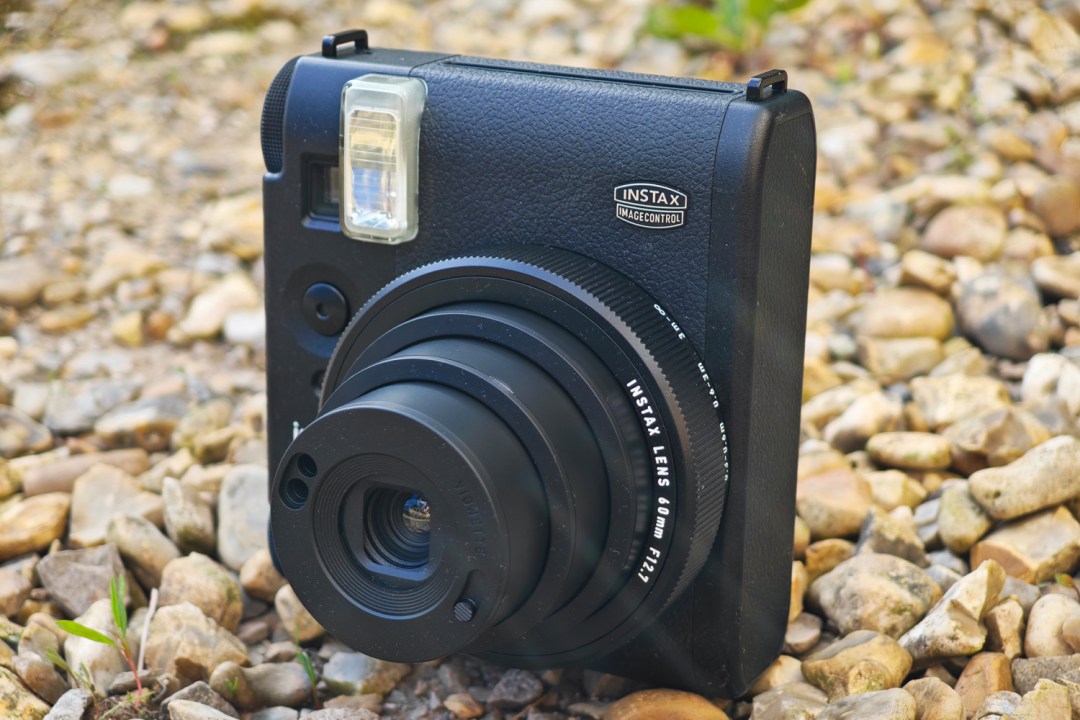
Stuff Verdict
About as creative as ‘true’ instant cameras get, yet still super easy to use. The Fujifilm Instax Mini 99 is both an entry-point to instant film and a step up for existing fans of the format.
Pros
- True analogue approach to creative effects
- Classic camera looks
- Still point-and-shoot friendly
Cons
- Colour mode dial could be clearer
- Where’s the selfie mirror?
Introduction
The format never truly went away, but instant cameras were definitely on life support at one point. Fujifilm’s Instax range was the defibrillator shock to the chest it needed, at least among younger photography fans who weren’t around for instant film the first time. The Instax Mini 99 is out to convince everyone else, by adding more creative controls than almost any analogue alternative.
Fuji has avoided the digital/analogue hybrid approach here, which should appeal to traditionalists, but hasn’t gone so all-in on manual modes that newcomers will be put off. And because the Mini 99 swallows Instax Mini film packs, it’s one of the most affordable ways into the hobby.
After a week of snapping, I’m convinced this might be the ideal middle-ground instant camera – but it’s not quite flawless.
How we test cameras
Every camera reviewed on Stuff is tested in a range of lighting conditions, with a variety of subjects and scenes. We use our years of experience to compare with rivals and assess ergonomics, features and general usability. Manufacturers have no visibility on reviews before they appear online, and we never accept payment to feature products.
Find out more about how we test and rate products.
Design & build: old is new again
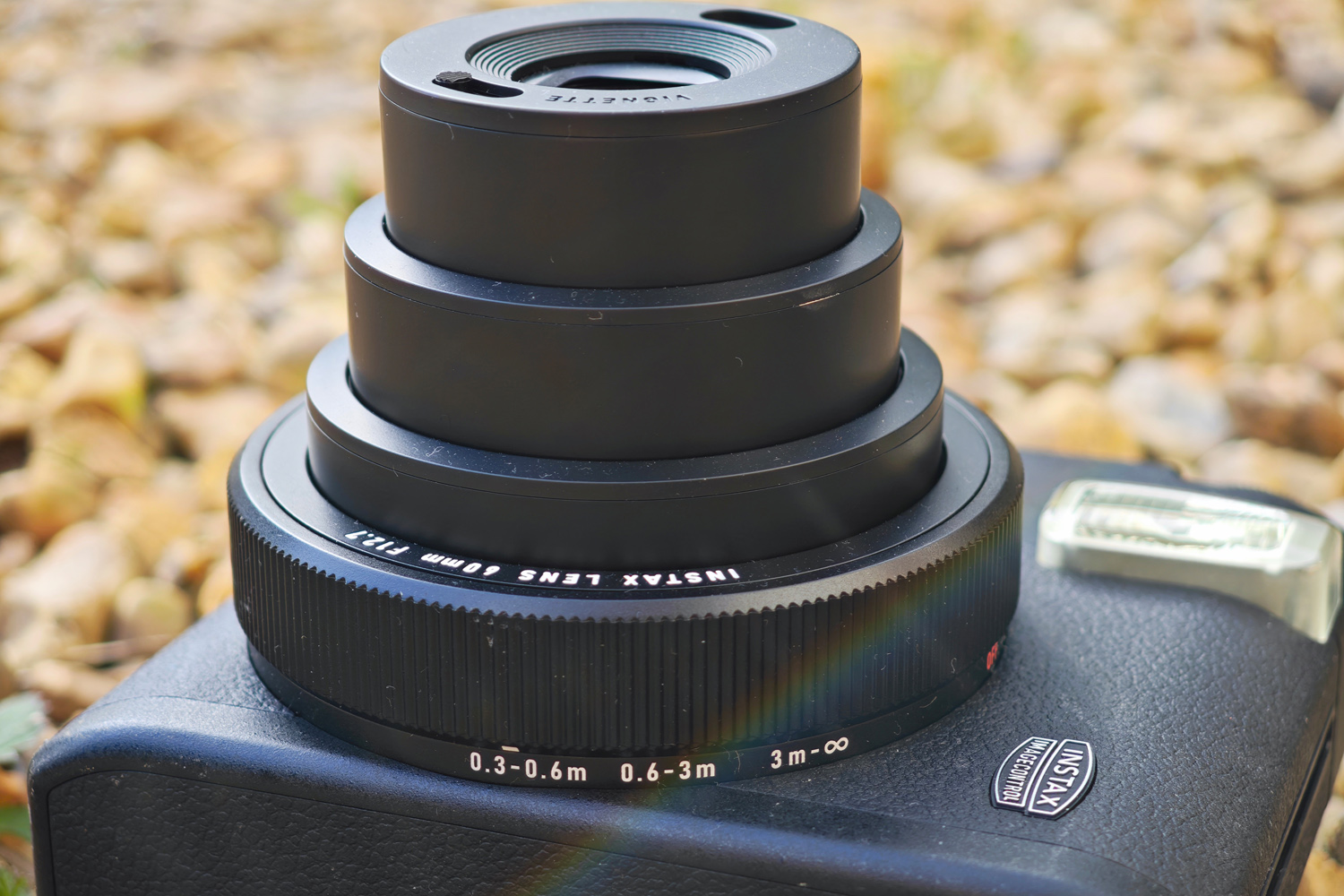
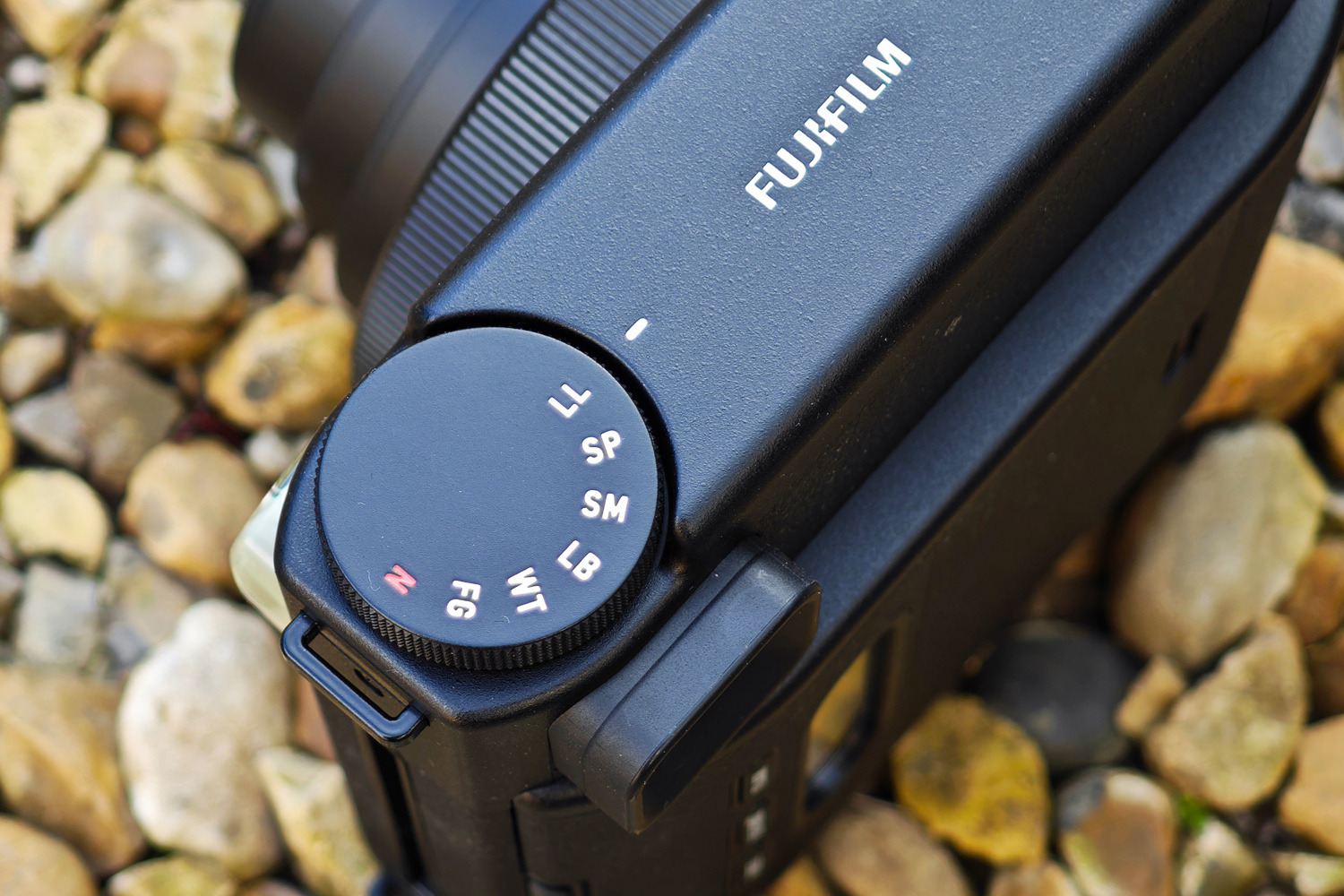
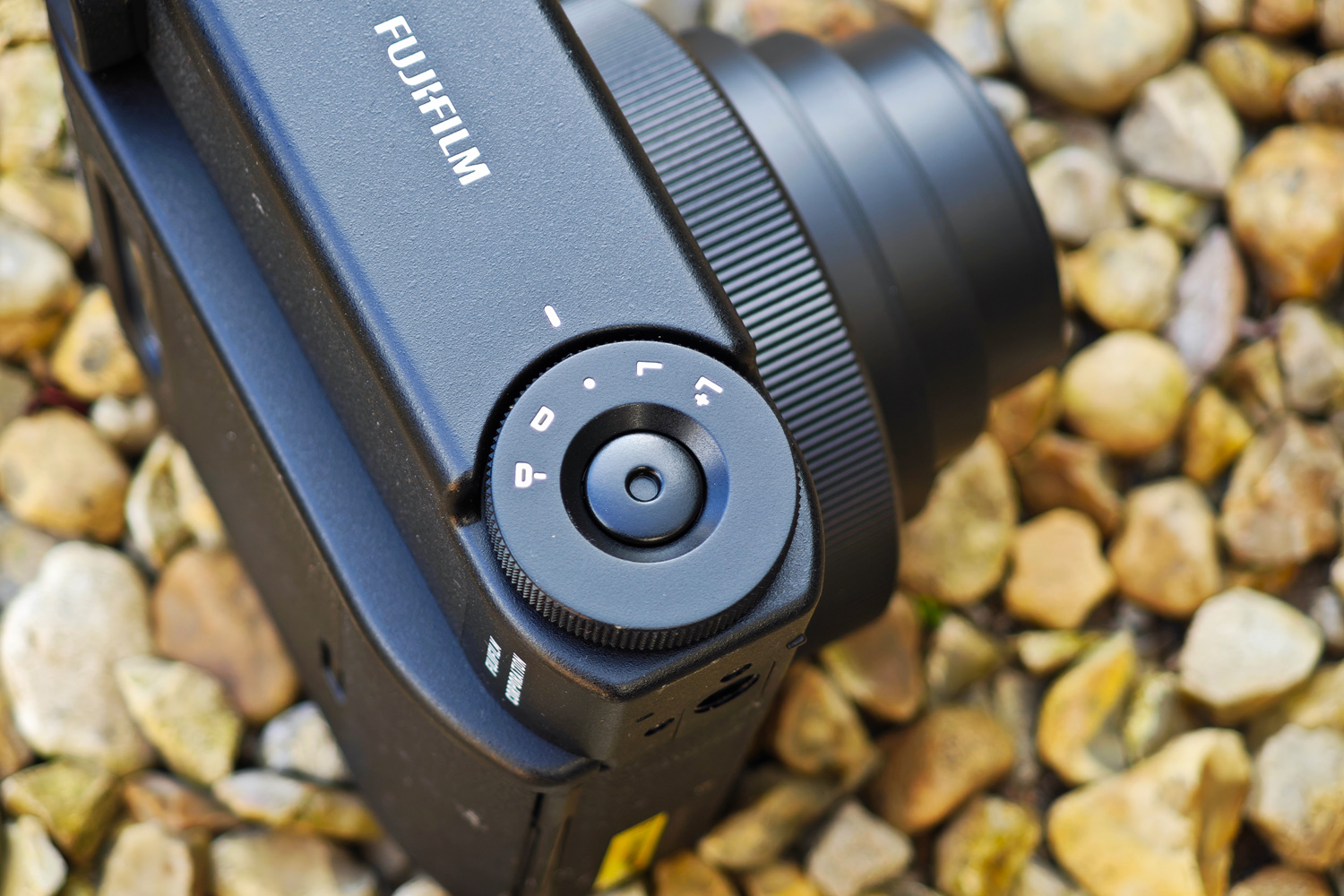
With a squared-off shape, throwback Instax logo, and textured grip, the Instax Mini 99 has all the hallmarks of Fuji’s X-series digital camera line-up. I actually think the firm missed a trick by not calling it the Mini 100, and piggybacked off the phenomenally popular Fujifilm X100VI.
It’s far less toy-like than the basic Instax Mini 12, despite both cameras being roughly the same size and made almost entirely from plastic. The leather-like finish helps a lot here. You’re not going to slip one of these in a jeans pocket, but even with film and a battery fitted it won’t weigh down your kit bag. The included shoulder strap is well worth using if you don’t take a bag with you.
This camera is meant to be held vertically, to match an Instax Mini print’s thicker frame bottom, with the main shutter button on the front above the lens barrel. Fuji has added a second shutter button in case you prefer to shoot in landscape, up top alongside the exposure and creative effects dials – which are both easy to read regardless of how you’re holding it. The optical viewfinder is set up for both orientations, but in a strange offset way that meant I rarely got it lined up correctly with my eye on the first attempt.
A simple LCD panel on the film door at the rear shows how many snaps you have remaining in the currently loaded pack, while three buttons let you adjust the strength of the built-in flash (or disable it altogether with Bulb mode), turn on a self-timer, and toggle between automatic, indoor, sports and double exposure modes. The flash is mostly strong enough to properly expose indoor scenes, but works best with closer subjects than entire rooms of people.
A tripod thread on the bottom edge is a welcome inclusion, though you don’t get a second on the side for landscape shooting. For that you’ll need a tripod with a rotating head. The satisfyingly chunky metal extension bundled in the box lets you open the film door for swapping packs while mounted (there’s not enough space to do so when stuck straight on a tripod). It also acts as a stubby hand grip, which makes holding the camera out for selfies that little bit easier. Framing them can be tricky, though, as there’s no selfie mirror on the lens barrel like you’ll find on most of Fuji’s Instax Mini cameras.
Features & battery life: dial it in
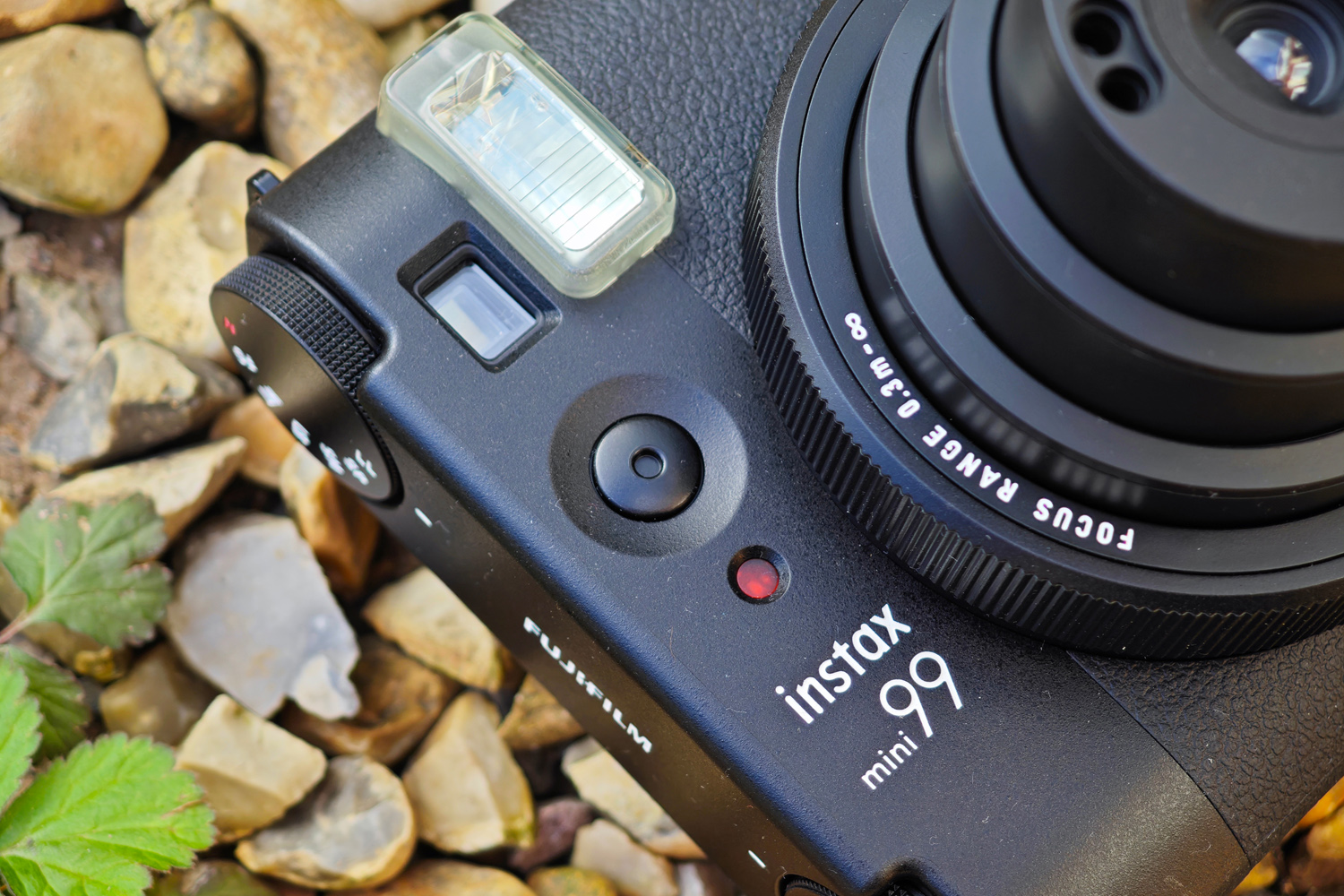
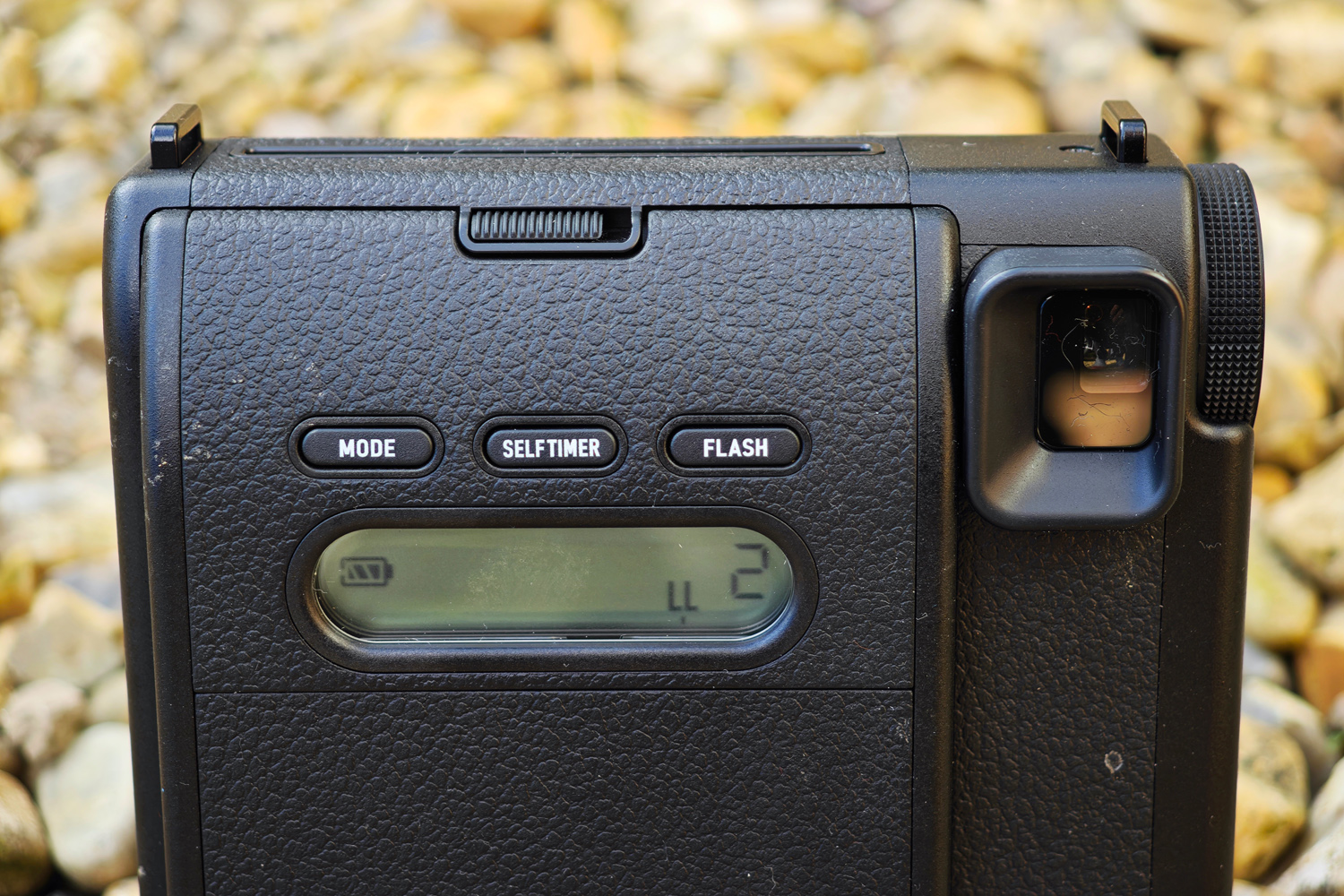
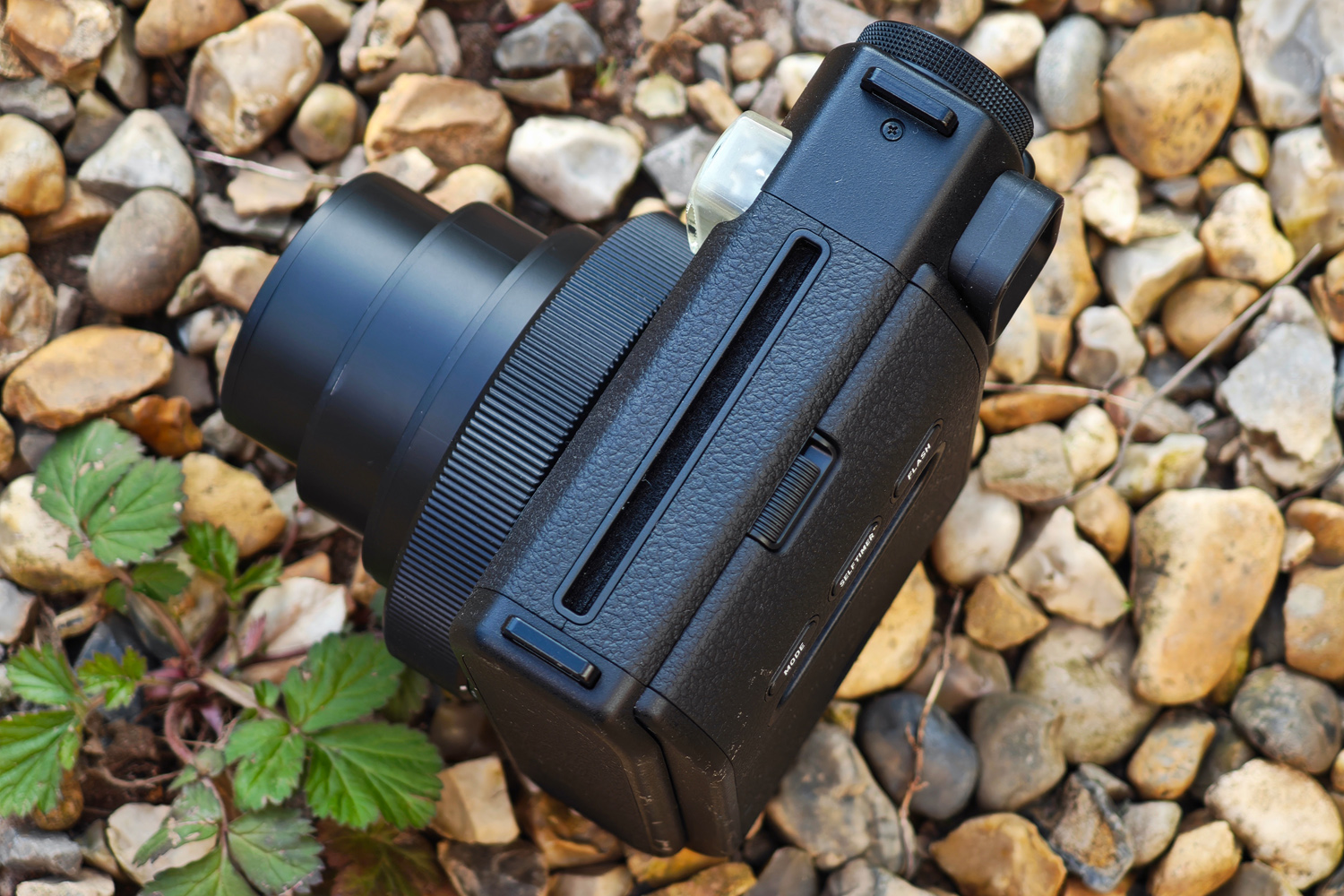
The pair of chunky knurled mode dials on the top plate put exposure adjustment and a bunch of creative colour effects within easy reach. The former has five levels, from L+ for the brightest exposure to D- for the darkest. The latter uses four LED lights inside the camera body to tint the Instax film, which is a more authentic approach than the digital filter effects found on hybrid instant cameras such as the Instax Mini Evo.
There’s a choice of Faded Green, Warm Tone, Light Blue, Soft Magenta, or Sepia hues, plus a Light Leak mode meant to mimic the artistic/ruinous (delete based on your personal preference) effects many cheap 1970s instant cameras would produce. I do think the initials chosen for each effect could’ve been a little clearer – did we really need LB and SM for blue and red, when B and R were right there?
Fuji has also taken the analogue approach to image vignetting, adding a manual lens hood that can be slid in and out of position. I often forgot I’d used it, which meant having to retract it and retake my shot if I didn’t want the effect. I blame years of using digital cameras with LCD screens filled with icons highlighting every active feature and setting.
With no USB port, you’ve got to prise open a small door on the rear and remove the battery to charge it, using the small bundled cradle. In-camera charging would’ve been more convenient. Still, it beats disposables, and will be familiar to anyone with an Instax Mini 90 already in their collection. I didn’t manage to run it dry in a week of shooting, which translates to ten film packs between top-ups. Your wallet is likely to empty sooner, given film packs cost around $7/£7 each.
Performance: light me up
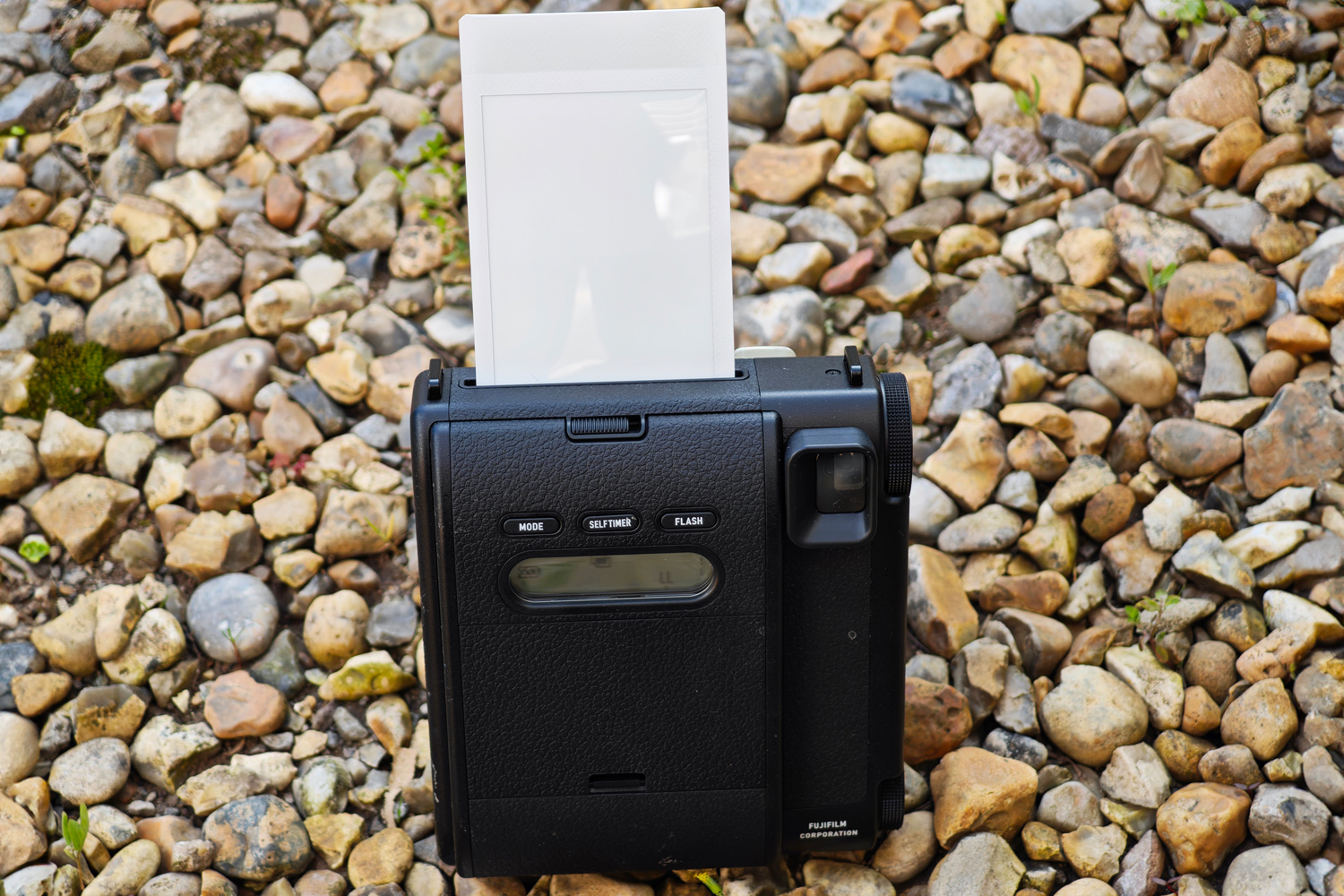
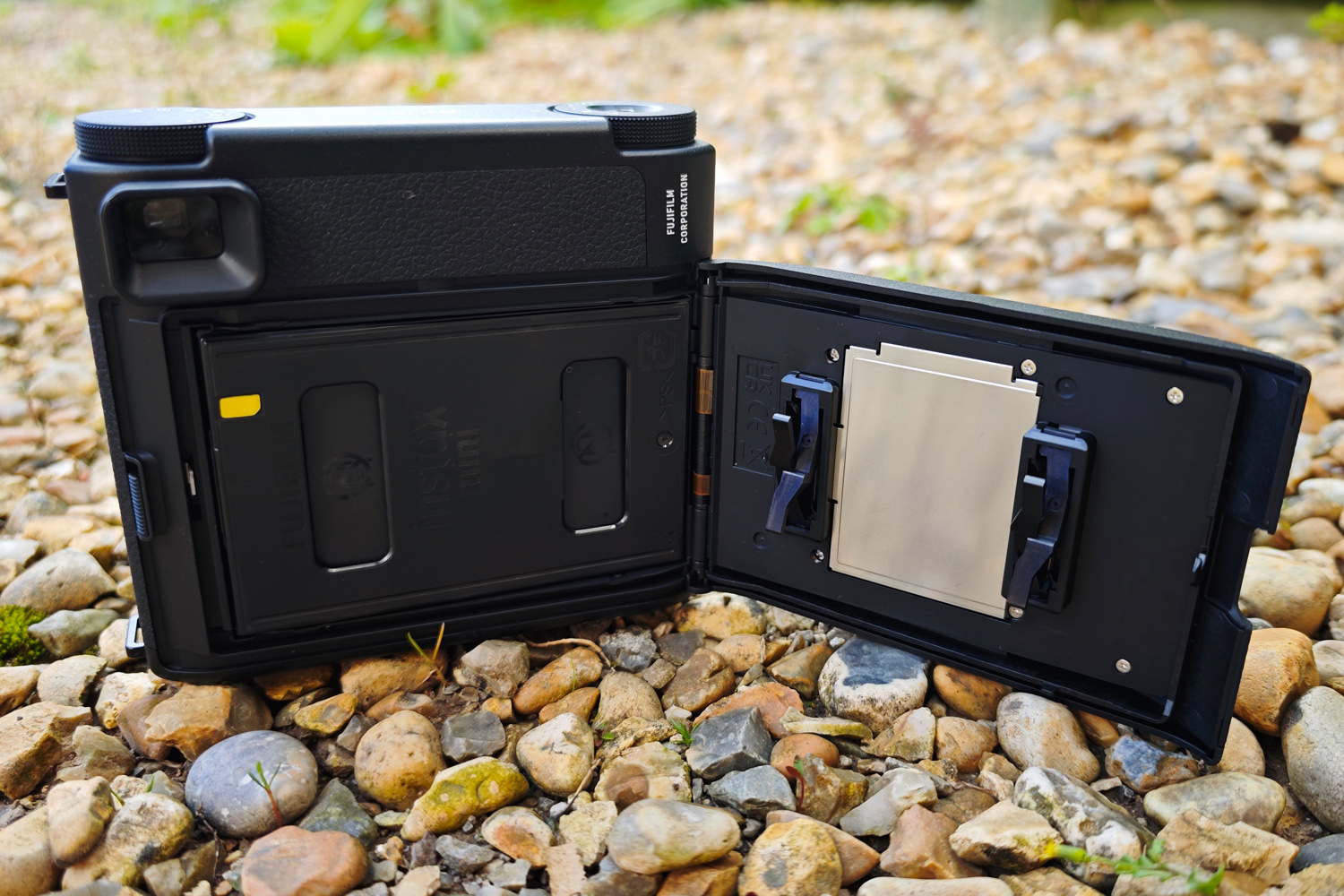
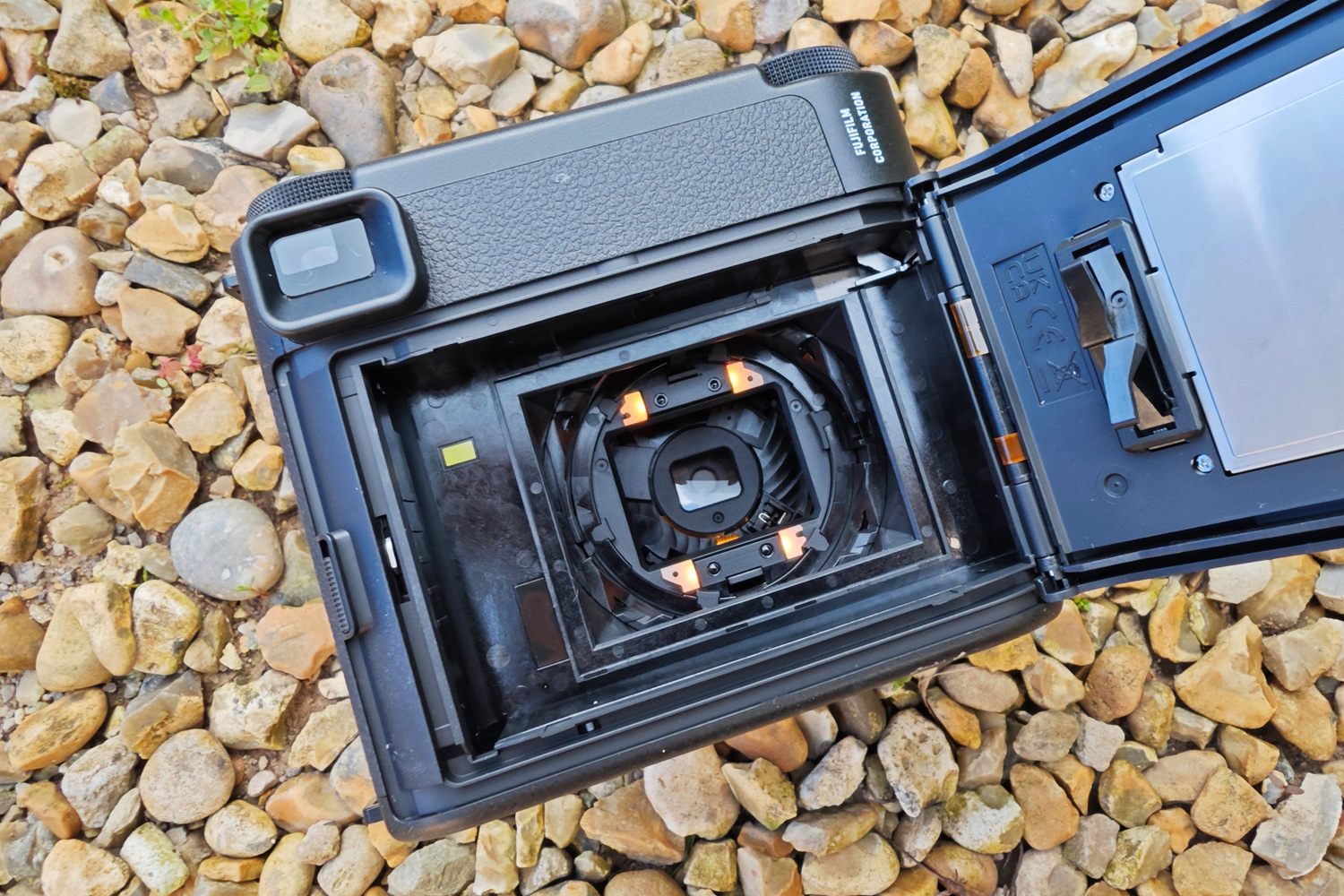
A twist of the lens barrel powers up the camera instantly. This is also where you set the focus distance, with 0.6-0.3m, 3m-0.6m, and 3m and above covering almost every shooting scenario. Again, you’ve got to remember which one you used last, as there’s no indicator through the (entirely optical) viewfinder or the basic LCD rear display.
It’s a 60mm equivalent focal length with an f/12.7 aperture, which is fairly typical for an instant camera. The level of detail on show at all three focus distances is up there with the best I’ve seen from Instax – namely the Mini 90, which this camera effectively replaces. Close-ups in particular stayed very crisp.
Sport mode was surprisingly effective at capturing moving subjects. It’s not something I’d had much success with in the past using instant film, but it worked well with a passing classic car. Bulb mode lets you snap light trails, but you’ve got to physically hold down the shutter button for the desired exposure length; the first time I tried I simply pressed it, which effectively wasted the shot.
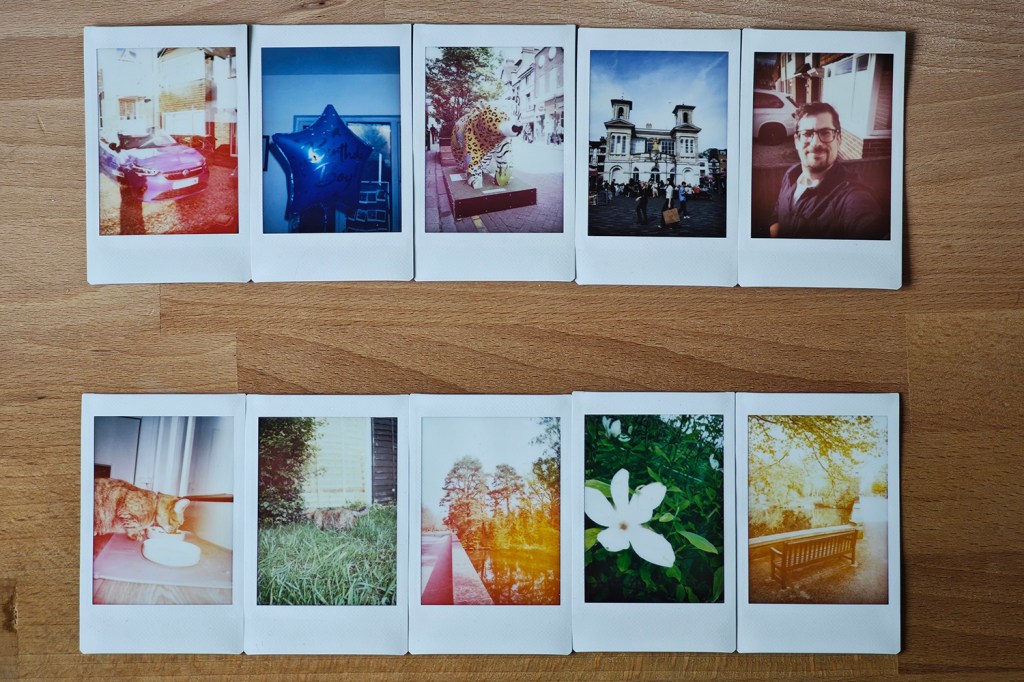
Even before I experimented with the colour effects, each Instax Mini print had that signature instant film charm: all vibrant colours, dramatic contrast or washed-out pastels depending on how much work the flash was doing, and occasionally extreme blown-out highlights.
Light Leak is the most abstract effect of the bunch, adding different random bleed effects every time I pressed the shutter button. The results looked particularly trippy when combined with the dual exposure mode, but it felt like pot luck as to whether my subject would be recognisable. Sepia and Warm Tone are the subtlest, while there’s nothing ‘soft’ about Soft Magenta at all. It, along with Light Blue and Faded Green, make for particularly distinctive prints. Just keep in mind they have no effect when using Monochrome film packs.
There’s an opportunity for creative control here you just don’t get from other instant cameras. Hybrid cams can do similar with digital effects before ‘printing’ your photo, but is that really in the spirit of instant film? If you say no, you’ll be very happy with one of these in your camera bag.
Fujifilm Instax Mini 99 verdict
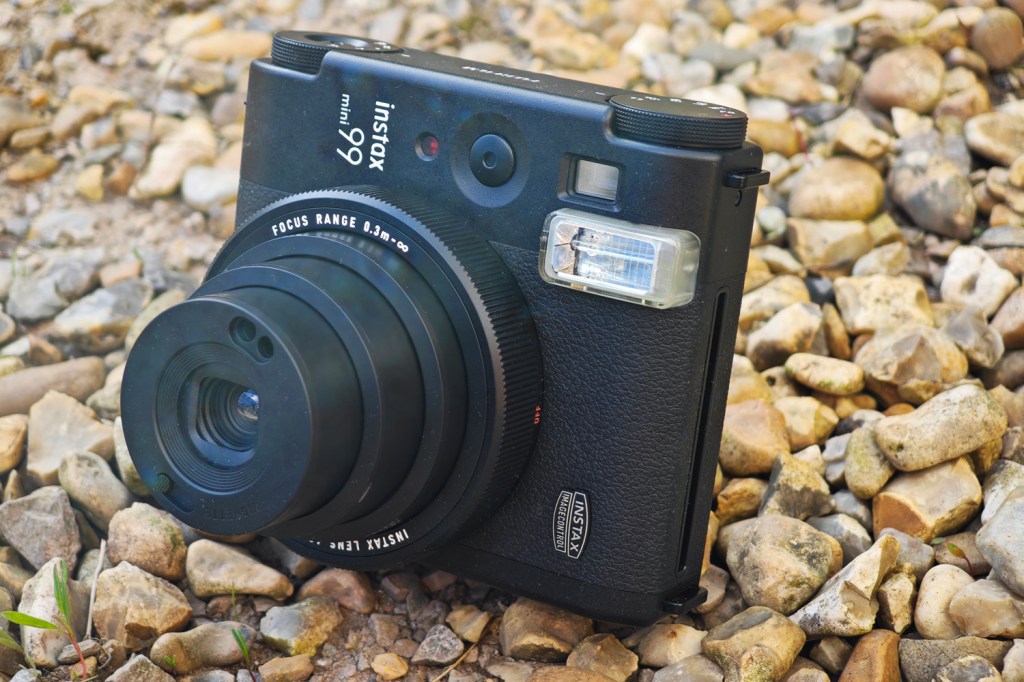
I can’t think of another instant camera that’s as easy to use, yet as ripe for creativity as the Fujifilm Instax Mini 99. At least not one that will only set you back $200/£175.
Newcomers can treat it as a point-and-shoot, only experimenting with its various colour effects and controls once they’re familiar with the quirks of instant film; more experienced snappers will love the exposure adjustment and retro-inspired looks. Instax Mini remains the most affordable type of instant film, too.
Using LEDs to apply colour effects and having a physical lens hood for vignetting will also appeal to the sort of photographer that insists “instant equals analogue”. But if that’s not a hill you’re willing to die on, the hybrid Instax Mini Evo is a tempting alternative. It’s more compact, has a bunch of creative options available through its LCD screen, and can also double as a photo printer.
Stuff Says…
About as creative as ‘true’ instant cameras get, yet still super easy to use. The Fujifilm Instax Mini 99 is both an entry-point to instant film and a step up for existing fans of the format.
Pros
True analogue approach to creative effects
Classic camera looks
Still point-and-shoot friendly
Cons
Colour mode dial could be clearer
Where’s the selfie mirror?
Fujifilm Instax Mini 99 technical specifications
| Film type | Fujifilm Instax Mini |
| Lens | 60mm equivalent, 0.3-0.6m / 0.6m-3.0m / 3.0m-infinity focusing |
| Display | single-line LCD shooting mode/film count indicator |
| Viewfinder | optical, 0.37x magnification |
| Shooting modes | Auto/indoor/sports/double exposure/bulb modes, self timer Colour effects (faded green, warm tone, light blue, soft magenta, sepia, light leak) manual vignette slider |
| Battery life | 100 shots |
| Dimensions | 104x118x60mm, 340g (without battery/film) |
